
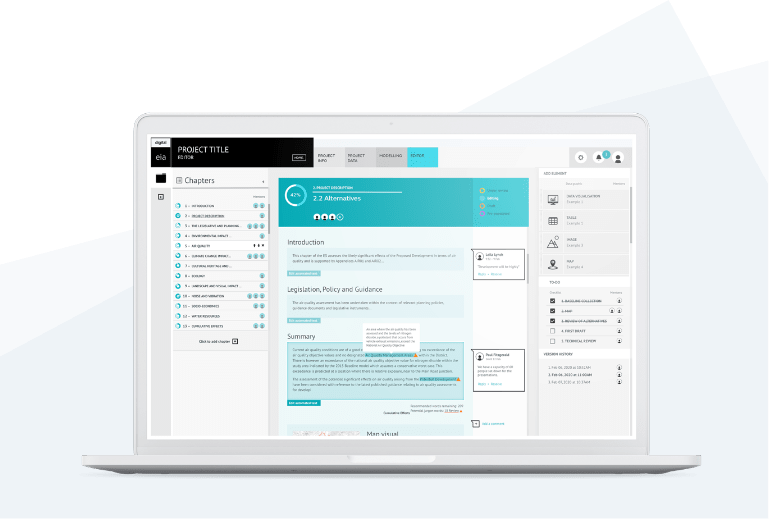
Seven ideas to transform EIAs
We were able to cluster our ideas into seven concept areas from our research and idea generation workshops. These concepts aim to solve the challenges identified earlier in our design process.
We have also taken a deeper dive into three of the ideas – National Environmental Datahub, Digital EIA Workspace and Post-Application Monitoring – designing prototypes and developing roadmaps (see below).
One place to access all environmental data
A standardised collaboration space for conducting the EIA and writing the Environmental Statement
A ‘must-do’ process that will improve the quality of mitigations and data
A semi-automated tool that helps developers to understand if they need to undertake an EIA or not
A digital tool that generates scoping recommendations and builds a custom EIA Workspace structure.
A plug-in tool to test and model different impacts and scenarios within a digital environment
A digital and interactive output of the EIA process that allows users to easily discover and understand information relevant to them
They could work independently, but together they could transform the EIA process
How they sit along the EIA journey
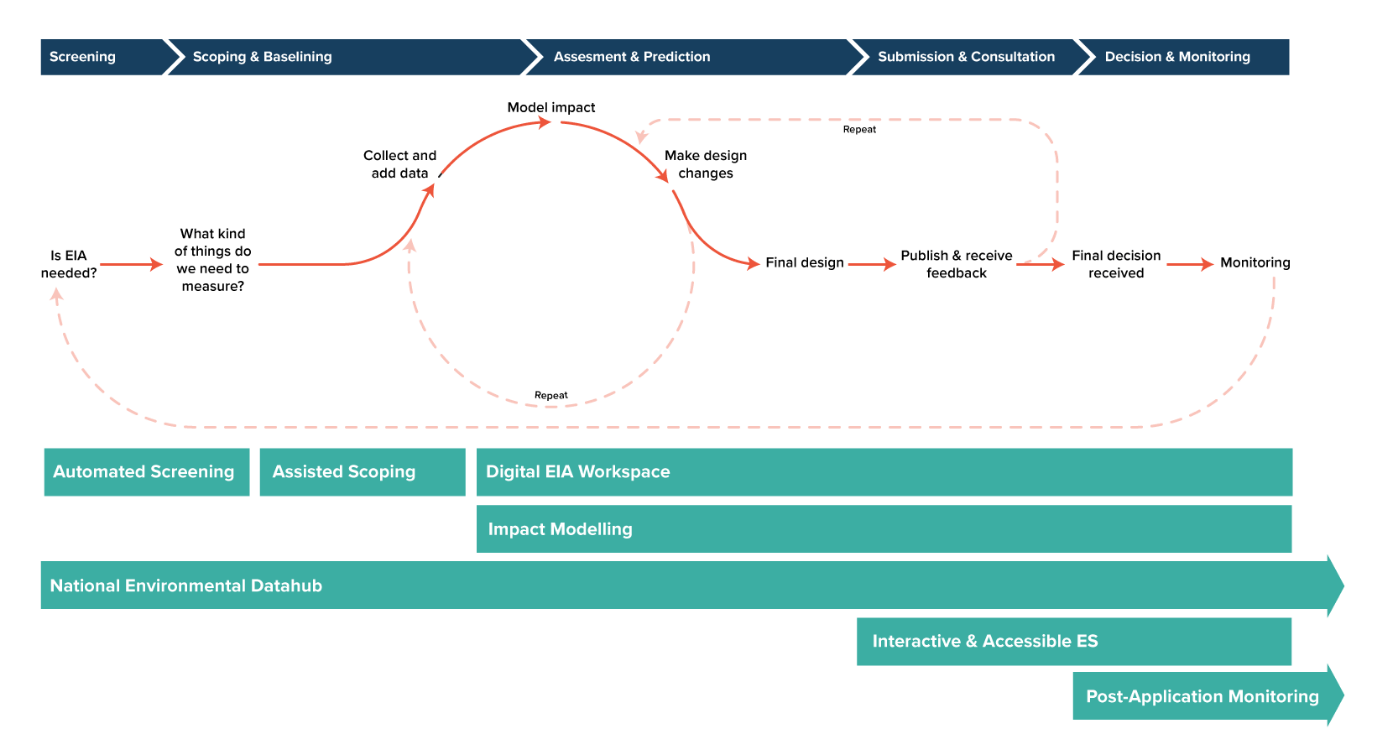

National Environmental Datahub
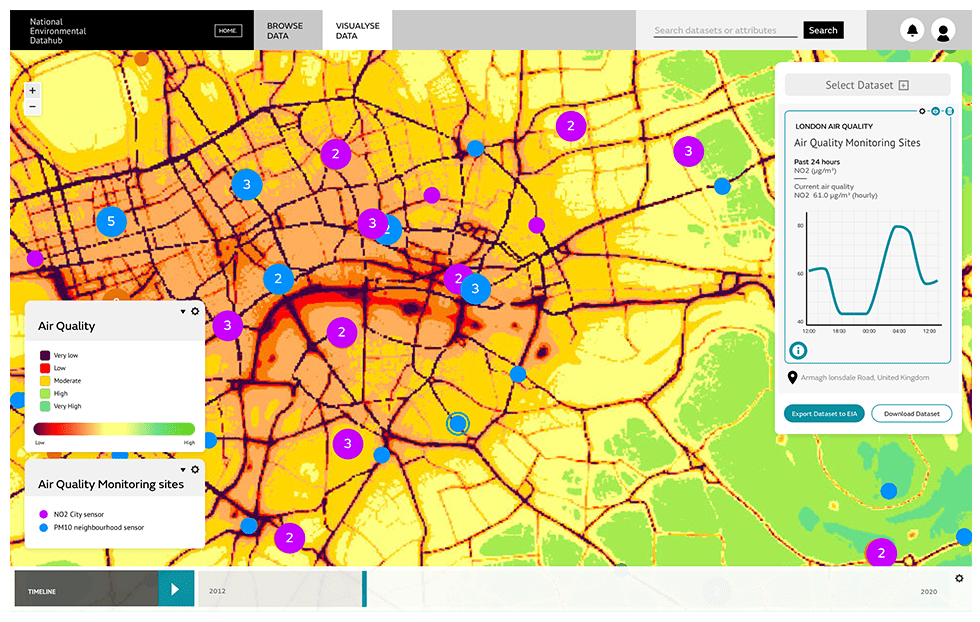
One place to access all environmental data
A central and standardised open data portal where users can access all relevant environmental data through a distributed data approach. One place to discover, access, analyse and contribute raw data for use and re-use in the EIA process.
See prototypesDigital EIA Workspace
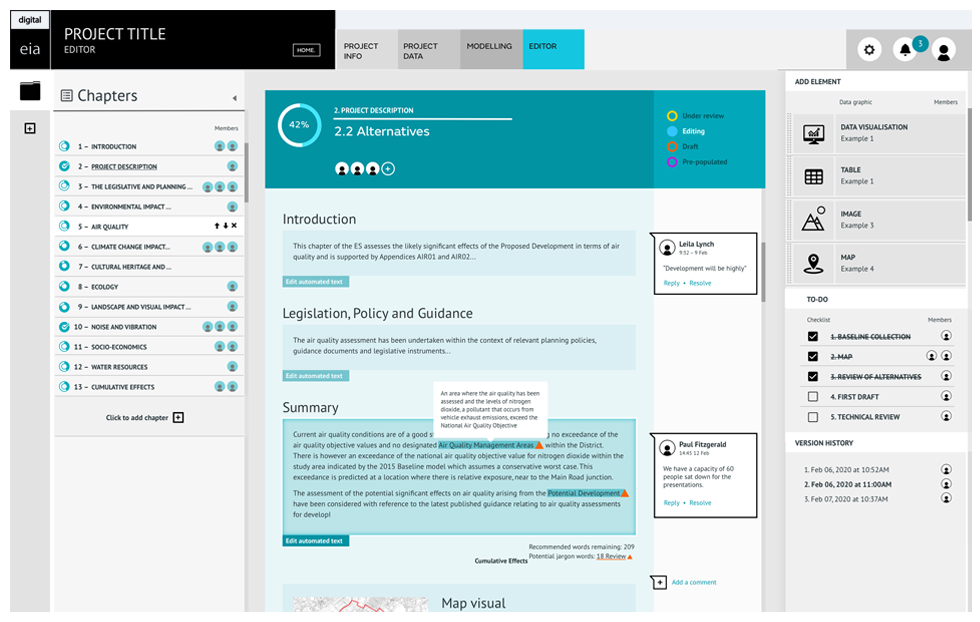
A standardised collaboration space for conducting the EIA and writing the Environmental Statement
The Digital EIA Workspace can be used when undertaking an EIA project. It enables users in various locations and organisations to access standard templates and methods, use pre-populated policy and legislation text, collate and assess information and data. It acts as one centralised place for collaboration between project teams and stakeholders, where they can manage tasks and overlaps, visualise data and work together on outputs.
See prototypesPost-Application Monitoring
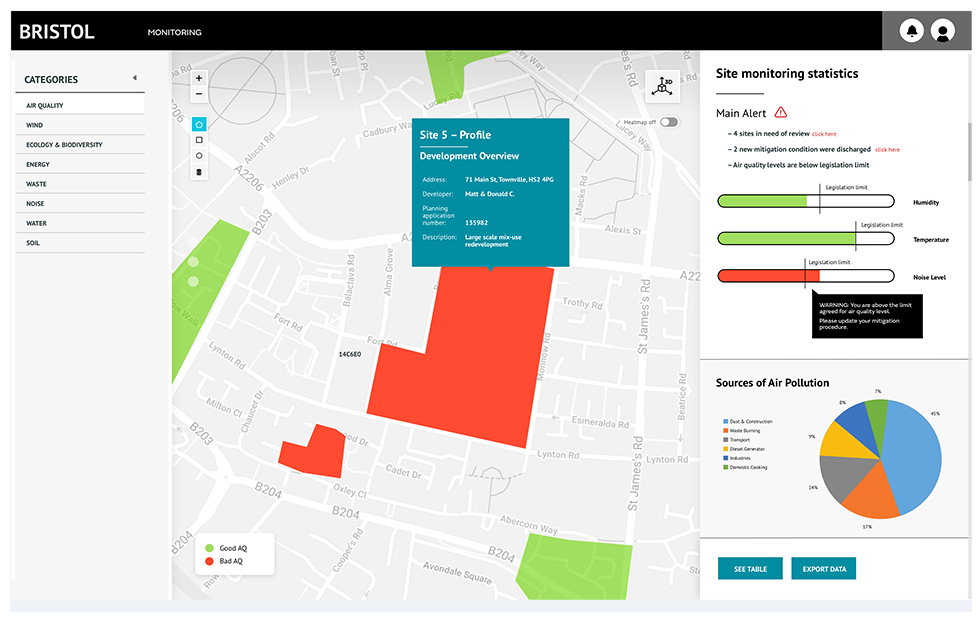
A ‘must-do’ process that will improve the quality of mitigation and data
Following construction and operation of a development, data is rarely collected about the actual impact of the development and whether mitigation measures were successful or not. There are various benefits associated with encouraging post-application monitoring, and we have explored three ways in which it could be encouraged, collected and utilised.
See prototypesAutomated Screening
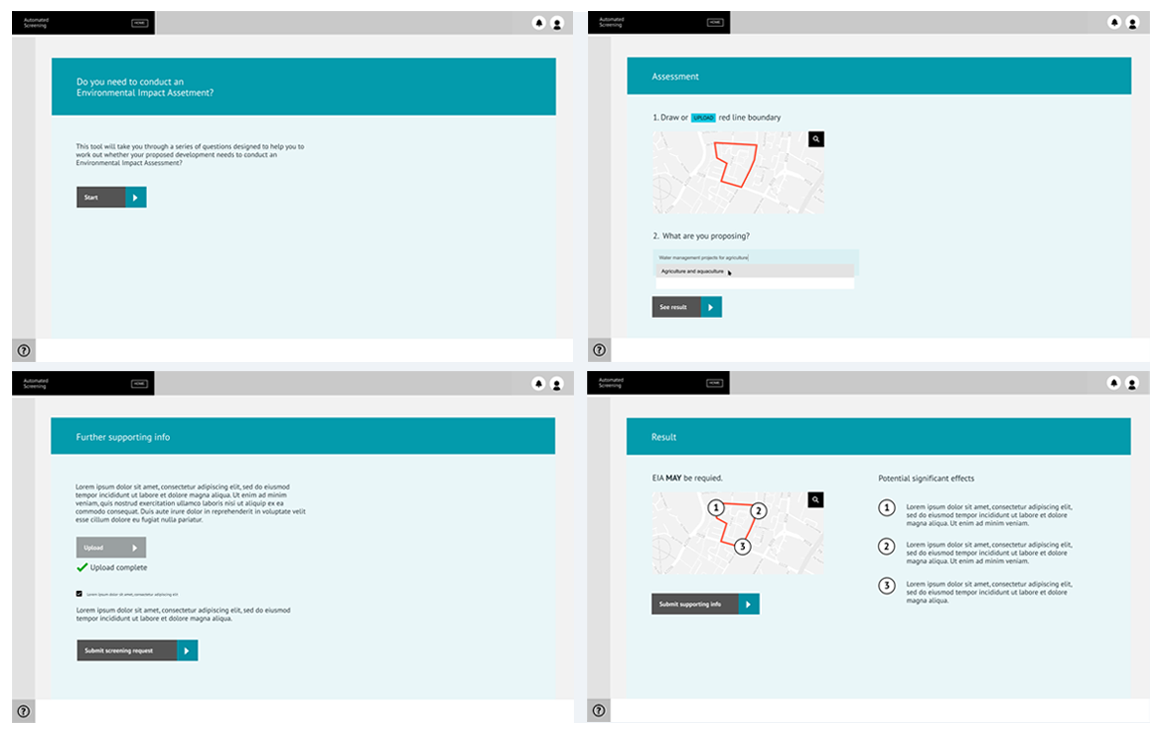
A semi-automated tool that helps developers to understand if they need to undertake an EIA or not
An automated tool that uses a digital version of legislation to help applicants understand whether or not a new development proposal requires an EIA. If required, the semi-automated report will be submitted to Local Planning Authorities for a screening opinion.
Assisted Scoping

A digital tool that generates scoping recommendations, consolidates scoping feedback and builds a custom Digital EIA Workspace structure.
This concept seeks to improve the efficiency and transparency of the EIA Scoping process for both public and private sectors.
The tool/platform seeks to automatically collate standardised open data, relevant legislation/policy and methodology text to populate a semi-automated report for the producer. In response, it could semi-automate the distribution of the report to the appropriate statutory consultees to aid the consolidation of feedback.
Impact Modelling
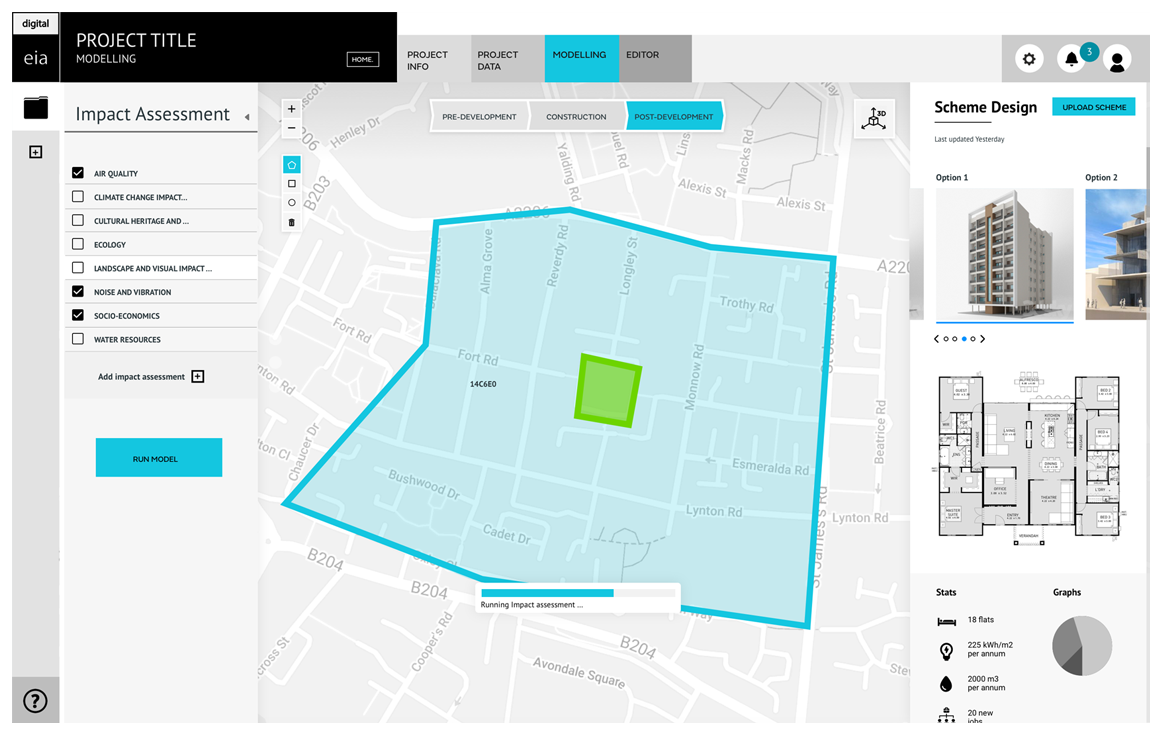
A plug-in tool to test and model different impacts and scenarios within a digital environment
Impact Modelling forms part of the Digital EIA Workspace idea. It allows users to overlay different scheme details with existing open data and project data to predict the changes in environmental effects. This tool could be customised and ‘powered up’ by adding extra assessment tools from the plug-in marketplace.
Interactive & Accessible Environmental Statement

A digital and interactive output of the EIA process that allows users to easily locate and understand information relevant to them
A digital output of the EIA Workspace, the Interactive & Accessible Environmental Statement is used for consultation and engagement purposes and aids decision making. It allows users to easily find and understand information, data and impacts relevant to them using a selection of filters and questions.
